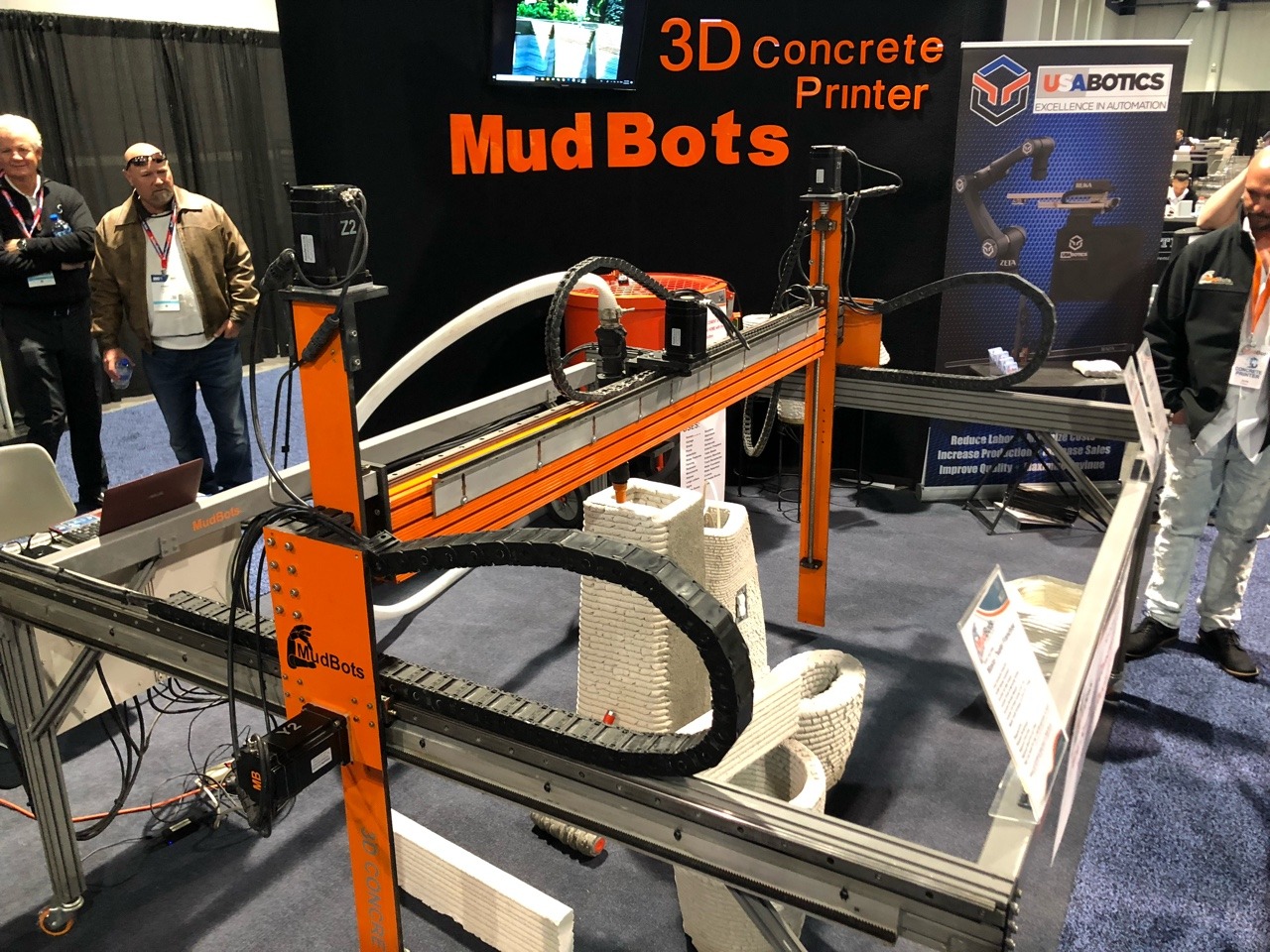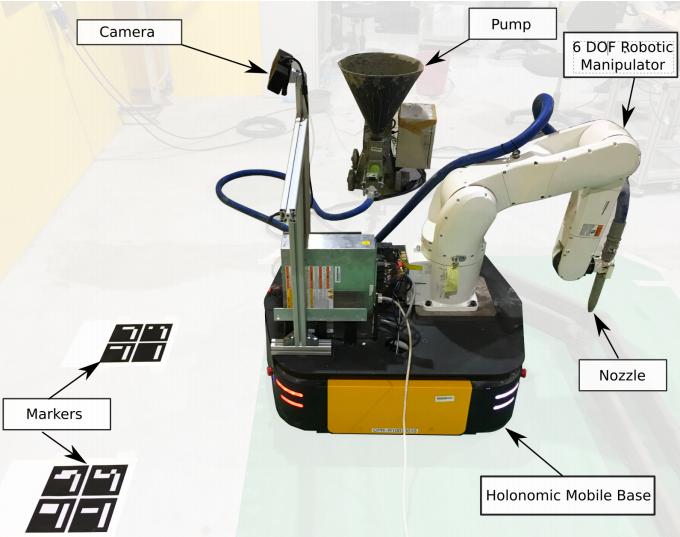New Technology Promises To Speed Up Home Production
Written by: Mark Clement
Publish Date: September 13, 2019


Contributing editor and Trailer Master Cliff Woodman handed me a business card while we walked the floor at the 2019 International Builders’ Show and told me to check the company out.
The company, MudBots 3D Concrete Printing, prints houses, bridges, pillars, statues, “fences,” water features, signage, and planters.
The future is here.
From emailing with MudBots—clearly a Boston Dynamics of the slow-to-evolve-for-good-reason home-building world—here is what I have gleaned. I think we are living to see an inflection point in the way some builders build.
Some printed designs use rebar. Others—depending on the mix—do not. Wiring, plumbing, and insulation are essentially handled with a hollow (read: two-ply) wall design that uses less material and is cheaper to produce. No forms required.
While MudBots can print (read: place mix) nearly anywhere and they can print interior/exterior walls “faster than anything out there” (maybe they have not met @awesomeframers), footings and flatwork are still dominated by the high-volume pour-and-dump of traditional concrete placement.
MudBots has found that door and window openings are easier to cut out while the mix is rigid, of course, but still green enough to slice with a trowel or recip. Cool. “It cuts like butter,” the company says.
Owned by www.usabotics.com, this is the typical venue of tech experts like Wired magazine. MudBots is worth watching.
Its business is franchise-able and I think this nugget from the website says a lot.
Integration of MudBots 3D Concrete Printer to your process will decrease your production time by up to 70% - add finishing touches while or after printing. Gain the competitive advantage in order to stand out in your field.
About the Author
This article is written by Mark Clement
Read the original post here.


